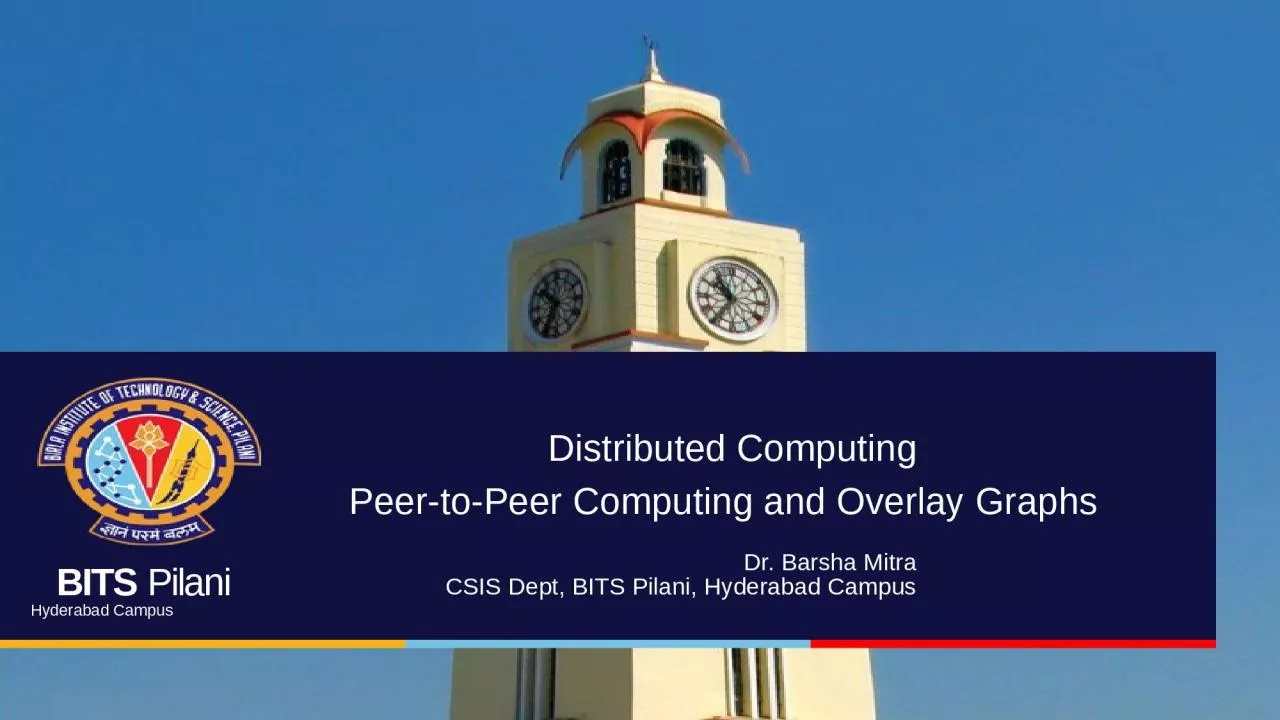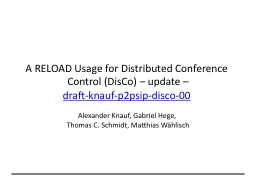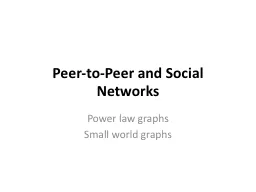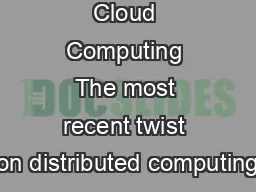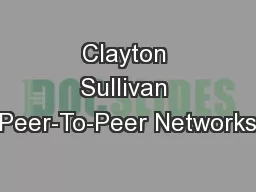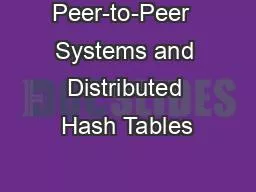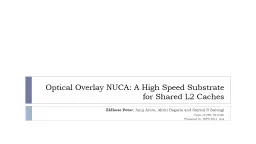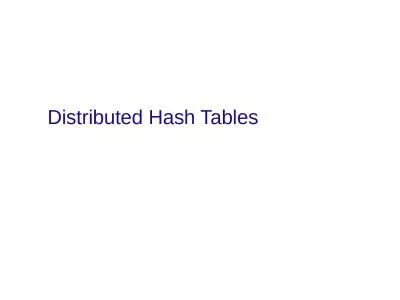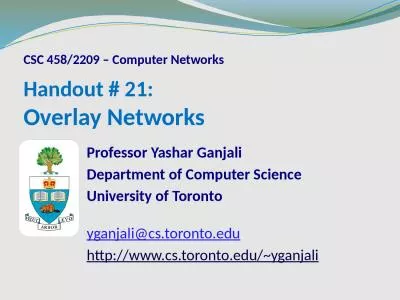PPT-Distributed Computing Peer-to-Peer Computing and Overlay Graphs
Author : ariel | Published Date : 2023-07-22
Dr Barsha Mitra CSIS Dept BITS Pilani Hyderabad Campus Introduction Course ID SS ZG526 Title Distributed Computing allows for flexibly sharing resources eg files
Presentation Embed Code
Download Presentation
Download Presentation The PPT/PDF document "Distributed Computing Peer-to-Peer Compu..." is the property of its rightful owner. Permission is granted to download and print the materials on this website for personal, non-commercial use only, and to display it on your personal computer provided you do not modify the materials and that you retain all copyright notices contained in the materials. By downloading content from our website, you accept the terms of this agreement.
Distributed Computing Peer-to-Peer Computing and Overlay Graphs: Transcript
Download Rules Of Document
"Distributed Computing Peer-to-Peer Computing and Overlay Graphs"The content belongs to its owner. You may download and print it for personal use, without modification, and keep all copyright notices. By downloading, you agree to these terms.
Related Documents

